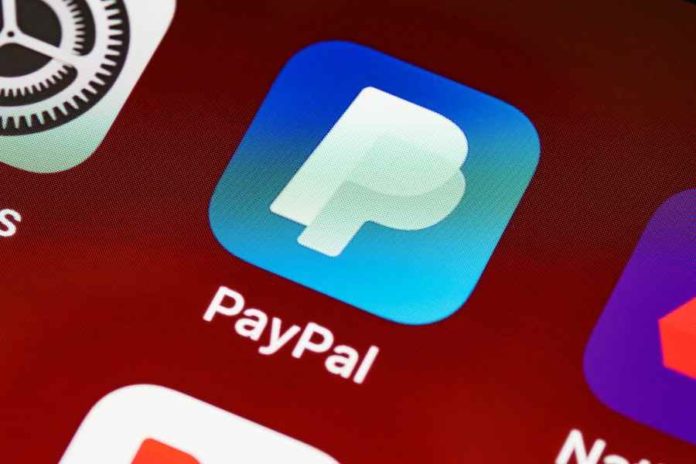As one of the world’s largest online payment solutions, PayPal has grown to be a ubiquitous name in the world of e-commerce. Since its inception in the year 2000, PayPal has made it possible for users to conduct financial transactions through their mobile devices with ease. With more than 425 million accounts worldwide and $19 billion in total payment volume, it’s evident that this digital payment solution is here to stay. To understand how exactly PayPal makes money, we must first understand its business model as a company. As an intermediary between sellers and buyers, PayPal charges standard rates for its services – nothing more, nothing less. Let’s take a closer look at how they get compensated…
How Does Paypal Make Money?
1. Paypal’s Services
As one of the world’s largest online payment solutions, PayPal has grown to be a ubiquitous name in the world of e-commerce. Since its inception in the year 2000, PayPal has made it possible for users to conduct financial transactions through their mobile devices with ease. With more than 425 million accounts worldwide and $19 billion in total payment volume, it’s evident that this digital payment solution is here to stay. To understand how exactly PayPal makes money, we must first understand its business model as a company. As an intermediary between sellers and buyers, PayPal charges standard rates for its services – nothing more, nothing less. Let’s take a closer look at how they get compensated.
2. Transaction Fees
At the heart of every transaction is a small fee that PayPal charges to both the buyer and seller.
- Buyer: PayPal fees are set by the company and are based on the amount of money being transferred and how long the transfer will take. The fees can range anywhere from 2% to 5% of total payment volume. According to their website, “PayPal’s fee rates are designed to encourage customers to make purchases using PayPal.”
- Seller: PayPal’s fee for sellers is based on certain factors like how much you sell each month, your location, and your account status (payment verification). This fee ranges between 1% and 3%.
3. Verification Processes
As a business partner which facilitates online transactions, PayPal requires users to complete a verification process before they can use their service. This verification process is in place to ensure that all transactions are legitimate – no fraudsters or spammers can use this service.
- Verification Requirement
In order to complete a transaction via PayPal, you need to complete the following steps:
- Verification Processes
As you can see, these verification processes are pretty straightforward and easy to complete. The verification process takes anywhere from 2 business days to 4 hours depending on your payment type and account status. It is important that users comply with their policies when it comes to both the payment types they offer (credit cards, Paypal) and their verification requirements. For example, PayPal only accepts credit cards for its users’ transactions because it protects them through fraud detection and chargeback management between buyers and sellers at an individual level.
4. Chargeback & Chargeback Management
One of the most important aspects of PayPal’s business model is chargeback protection – protecting its customers from fraudulent transactions by reverting all transactions that are not made in good faith back to the original parties involved in the transaction (buyers or sellers). The process is known as chargeback management. Chargeback management is said to be important because PayPal’s mission statement is supposed to provide its customers with a hassle-free payment experience. The main way that PayPal protects its users from fraudulent transactions is through chargebacks – which it handles at the end of the transaction process (see transaction flow diagram in Figure 2).
5. Paypal’s Online Payment System
The system works through three major points of entry – sellers and buyers, and merchants. The flow between the different points is as follows:
- Seller Point of Entry
First, sellers are required to pay the transaction fees for their transactions (see above). Next, they must complete the following steps in order to process a legitimate transaction:
- Buyer Point of Entry
First, buyers are required to pay the transaction fees for their transactions (see above). Next, they must complete the following steps in order to process a legitimate transaction:
Paypal’s Fee Structure
1. Seller Fees
PayPal charges sellers a percentage of their transaction’s value as a fee. The fee structure for PayPal is dependent on the payment method and the currency used for the transaction. For example, PayPal allows you to charge customers in US and Canadian dollars, but if you are paying in pounds sterling or euros then the fees will be different.
2. Buyer Fees
PayPal charges buyers a percentage of their transactions’ value as a fee. The fee structure for PayPal is dependent on the payment method and the currency used for the transaction. For example, PayPal allows US and Canadian buyers to pay for goods and services with credit cards, but if you are paying with Australian dollars or euros then the fees will be different. A lot of these fee structures are similar to credit card processing fees that some vendors might be willing to offer their customers through a service like Square or Shopify Payments (see Figure 3).
3. Foreign Exchange Fee Structure
For international transactions, there are two different methods that merchants can use to carry out these transactions: either by creating an account within PayPal itself or by creating an account directly on eBay (PayPal’s online competitor) through its online data entry program known as Payflow Pro (see Figure 4).
4. Transaction Types
PayPal allows sellers to sell goods and services, while buyers purchase goods and services using PayPal’s online payment system. There are two different types of transactions that PayPal offers to sellers – a buyer receives funds immediately or a seller receives funds on the specified due date (see Figure 5). As opposed to credit cards, where you receive your funds straight away, if you are selling on eBay then you have 30 days from the date of purchase (i.e. the payment is received by eBay) to ship the items that were sold to your buyers. In this way, PayPal can better assist its merchants by providing them with refunds from their own balance more quickly than they would otherwise be able to do so. Any funds that remain after 30 days will be processed automatically into the merchant’s account upon demand by their bank.
5. Receiving Funds As Bitcoin
Sellers can receive payments in both US dollars and Canadian dollars through PayPal through two different methods – either creating an account within PayPal itself or through its online data entry program known as Payflow Pro (see Figure 6). In order for a merchant to receive payments in US dollars or Canadian dollars through PayPal they will need to open an account within PayPal itself rather than through Payflow Pro (see Figure 7).
How Paypal Makes Money From Its Core Services
Paypal Balance
This is a virtual balance that you have in your PayPal account. You can use this balance to make purchases or send money to other people. The balance is funded either by money that you have in your bank or money that you have received as payment for goods and services.
Paypal Buyer Protection
This protection guarantees that you will receive your goods or a full refund if the seller doesn’t deliver your order. It also protects you if you have a problem with a purchase. – PayPal Credit: This is a line of credit that you can use to make online purchases. It’s a great way to make purchases when you don’t have the funds readily available.
Paypal Send
This is a service that lets you transfer money to your friends and family members. It’s available to registered users in more than 100 countries. – PayPal Seller Protection: This service protects you if you sell goods on eBay or another online marketplace. It protects you if a customer doesn’t pay for the goods or if there is a problem with the order. – PayPal Business: A service that allows companies to send and receive payments from their customers in more than 180 countries.
Paypal Direct
This is a new way for people to send money to one another. It’s like an email that contains a free digital code. When you get the code, you can use it to make payments directly with other people. – Mobile Checkout: This mobile payment service lets you pay for goods and services right from your phone at millions of retail locations worldwide (see below).
Paypal Here
This is a technology that let’s you pay with your mobile phone at millions of retail locations worldwide (see below).
Payflow Pro
A business transaction program that helps small retailers accept online payments by letting them receive funds into their bank account automatically through their bank account each month for various types of payment methods (see Figure 6 above). PayPal also makes money from its affiliate programs. These affiliate programs are great ways for merchants who want to promote such things as web hosting websites.
Bottom Line
As we can see, there are several ways in which PayPal makes money from its core services. The company makes money from the fees that it charges to use its services. It also earns money from the interest that it earns on customer funds in its operational savings account. PayPal also earns money from the fees that it charges for its merchant services, which we will discuss below. The company also makes money from the fees that it charges for international transfers, currency conversion, and the sale of credit card and debit card information. PayPal also makes money from the sale of user data to third parties. All in all, it’s clear that PayPal is a company that has come a long way since it was founded. It’s no surprise, then, that the company has managed to become one of the leading players in the online payments industry.












![Merrick Bank Review [Credit Cards, CDs, Personal Loans] Merrick Bank Headquarters](https://www.moneytaskforce.com/wp-content/uploads/2019/12/Merrick-Bank-headquarters-100x70.jpg)